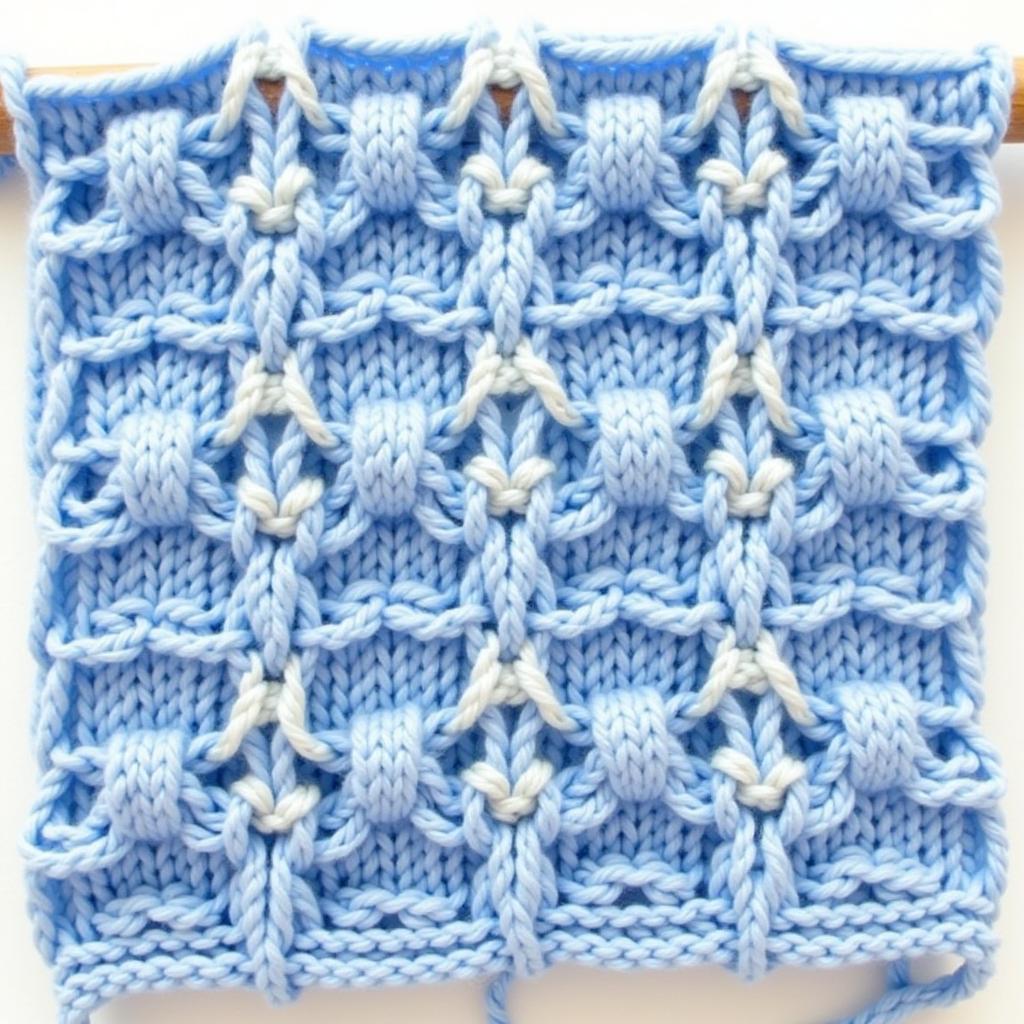Unraveling the Mystery of Puzzle Stitches
November 14, 2024Puzzle Stitches, those intriguing and often complex knitting techniques, offer a unique way to add texture and visual interest to your projects. They can transform a simple piece into a work of art, adding depth and dimension that captivates the eye. Whether you’re a seasoned knitter or just starting your knitting journey, understanding and mastering puzzle stitches can open up a whole new world of creative possibilities.
What are Puzzle Stitches?
Puzzle stitches, also known as mosaic knitting or slip-stitch patterns, are created by strategically slipping stitches and working with two contrasting colors of yarn. The slipped stitches create the “puzzle” effect, forming intricate designs that seem to interlock like pieces of a jigsaw puzzle. This technique allows for complex-looking patterns to be achieved with relatively simple knitting maneuvers, making it a rewarding challenge for knitters of all skill levels. The beauty of puzzle stitches lies in their versatility. They can be used to create everything from intricate geometric designs to delicate floral motifs.
Decoding the Puzzle: Understanding Slip-Stitch Knitting
The magic of puzzle stitches lies in the slipped stitches. By slipping a stitch purlwise or knitwise without working it, you create the raised and recessed textures that define the pattern. When worked with two contrasting colors, the slipped stitches of one color show through the other, creating the illusion of interwoven patterns.
Creating Your First Puzzle Stitch: A Simple Example
Let’s start with a basic example to illustrate how puzzle stitches work. Using two colors, let’s say blue and white, cast on an even number of stitches.
- Row 1 (Blue): K2, slip 2 purlwise with yarn in back. Repeat to end of row.
- Row 2 (White): Slip 2 knitwise with yarn in front, k2. Repeat to end of row.
These two rows form the basic repeat of a simple puzzle stitch pattern. By repeating these rows, you’ll see a textured pattern emerge.
 Basic Puzzle Stitch Pattern in Blue and White
Basic Puzzle Stitch Pattern in Blue and White
Exploring Different Puzzle Stitch Patterns
The world of puzzle stitches is vast and varied. From simple two-row repeats to more complex multi-row patterns, there’s a puzzle stitch for every project and skill level. Some popular patterns include:
- Brick Stitch: Creates a staggered brick-like texture.
- Basketweave Stitch: Produces a woven, basket-like appearance.
- Twisted Stitch Patterns: Adds a textured twist to the fabric.
Each pattern offers a unique look and feel, allowing you to explore endless design possibilities.
Tips and Tricks for Mastering Puzzle Stitches
Working with puzzle stitches requires attention to detail and a bit of patience. Here are a few tips to help you achieve perfect results:
- Maintain Consistent Tension: Consistent tension is crucial for creating even and well-defined puzzle stitches.
- Pay Attention to Yarn Dominance: Understanding how yarn dominance affects the appearance of your stitches is essential.
- Use Stitch Markers: Stitch markers can be helpful for keeping track of your rows and repeats, especially in more complex patterns.
Puzzle Stitches: Beyond the Basics
Puzzle stitches are not limited to flat knitting. They can also be incorporated into cables, lace, and other knitting techniques, adding another layer of complexity and visual interest to your projects.
Conclusion
Puzzle stitches are a fascinating and rewarding technique for any knitter. By mastering the art of slipping stitches and working with contrasting colors, you can unlock a world of creative possibilities, transforming simple projects into intricate works of art. So grab your needles and yarn, and embark on a journey to unravel the mystery of puzzle stitches!
FAQ
- What type of yarn is best for puzzle stitches? Any yarn can be used, but contrasting colors work best to highlight the pattern.
- Are puzzle stitches difficult to learn? No, even beginners can learn basic puzzle stitches.
- Can I use puzzle stitches for any project? Yes, puzzle stitches can be used for a variety of projects, from scarves and blankets to sweaters and accessories.
- What is yarn dominance? Yarn dominance refers to how one color of yarn appears more prominent than the other in a two-color pattern.
- Where can I find more puzzle stitch patterns? Books, magazines, and online resources offer a wealth of puzzle stitch patterns.
Common Scenarios
-
Problem: My puzzle stitches look uneven.
- Solution: Check your tension and make sure you’re slipping stitches consistently.
-
Problem: I’m having trouble following the pattern.
- Solution: Use stitch markers to keep track of your rows and repeats.
Further Exploration
- Explore other slip-stitch patterns.
- Learn about different colorwork techniques.
Contact us for any assistance. Phone: 0915117113, Email: [email protected]. Visit us at: Tổ 3 Kp Bình An, Phú Thương, Việt Nam, Bình Phước 830000, Việt Nam. We offer 24/7 customer support.